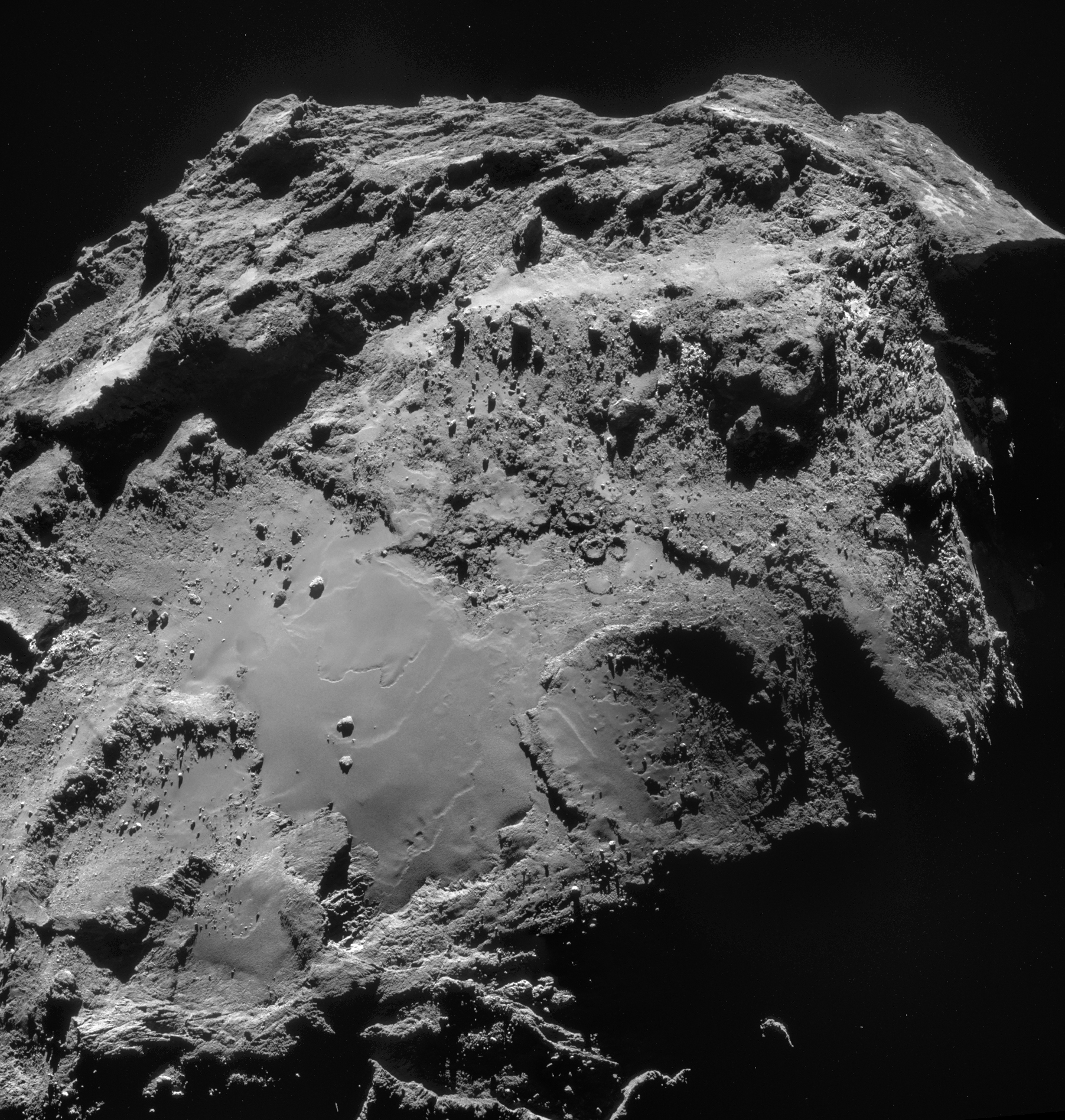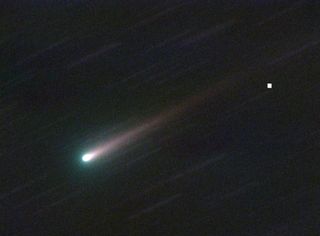Daring Philae Comet Landing Named Top Breakthrough of 2014

The first-ever soft landing of a robotic probe the surface of a comet has just been named the top scientific breakthrough of 2014 by the journal Science.
The European Space Agency's comet-studying Rosetta mission is telling scientists more about the origins of the solar system, according to representatives with Science. Rosetta has been orbiting Comet 67P/Churyumov–Gerasimenko since August and released the Philae lander down to the icy cosmic body's surface in November.
"Even though the landing was rougher than expected — Philae bounced off the unforgiving surface of 67P and came to rest on its side, quite a distance from its target — it was nonetheless the first-ever soft landing on a comet," Science representatives said in a statement. "The data from these two space probes are already shedding new light on the formation and evolution of such comets." [See images from the Rosetta mission]
Rosetta has already made quite a few discoveries in its time at Comet 67P/C-G. The orbiter sniffed out substances like water, methane and hydrogen — all molecules that are important to life — in the tenuous atmosphere of the comet. However, a recent report by members of the Rosetta Orbiter Sensor for Ion and Neutral Analysis (ROSINA) spectrometer array instrument showed that water from comets like Rosetta's likely never came to Earth. This was based on measurements of the ratio of hydrogen to a heavier isotope of the element called deuterium.
Philae transmitted scientific information for a few days on the surface until its batteries drained out. The spacecraft is in a zone that receives less sunlight than initially hoped for, but it's possible that Philae will reactivate when Comet 67P/C-G draws closer to the sun.
Even if Philae never wakes up again, the European Space Agency says that 80 percent of the mission's science return comes from the orbiting Rosetta spacecraft, which will track the comet through the cosmic body's closest approach to the sun in August 2015. At that point, the comet will be between the orbits of Earth and Mars.
The journal Science also chose nine other big scientific breakthroughs for 2014, listed below:
Get the Space.com Newsletter
Breaking space news, the latest updates on rocket launches, skywatching events and more!
- The rise in importance of CubeSats, a small kind of satellite that is doing more advanced science these days as computer technology improves
- How certain kinds of dinosaurs developed into birds, surviving a major extinction that took place 66 million years ago
- A possible treatment for Alzheimer's based on a mouse study showing that blood from a youngster can "rejuvenate" older mice brains and muscles
- Advances in robotics allowing machines to work together to build simple things or create 2D shapes such as letters, without human help
- Creating a computer brain that behaves more similarly to human brains using "neuromorphic" chips
- Two new ways of growing cells that are close to beta cells, an insulin-producing cell within the pancreas. These techniques may help with understanding diabetes
- Discovering that paintings of animals and other art in an Indonesian cave were between 35,000 and 40,000 years old, about four times as old as the 10,000-year-old age previously assigned
- Removing mice memories and implanting false ones using optogenetics, which changes neurons using light beams
You can read more about the top scientific breakthroughs of the year via this week's issue of Science.

Follow Elizabeth Howell @howellspace. Follow us @Spacedotcom, Facebook and Google+. Original article on Space.com.
Join our Space Forums to keep talking space on the latest missions, night sky and more! And if you have a news tip, correction or comment, let us know at: community@space.com.

Elizabeth Howell (she/her), Ph.D., is a staff writer in the spaceflight channel since 2022 specializing in Canadian space news. She was contributing writer for Space.com for 10 years before joining full-time. Elizabeth's reporting includes multiple exclusives with the White House, speaking several times with the International Space Station, witnessing five human spaceflight launches on two continents, flying parabolic, working inside a spacesuit, and participating in a simulated Mars mission. Her latest book, "Why Am I Taller?" (ECW Press, 2022) is co-written with astronaut Dave Williams.
Most Popular

